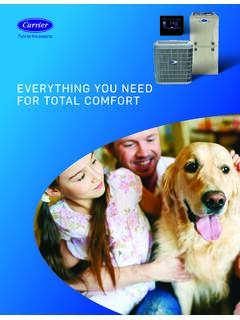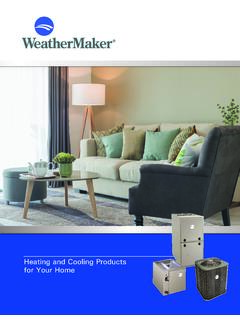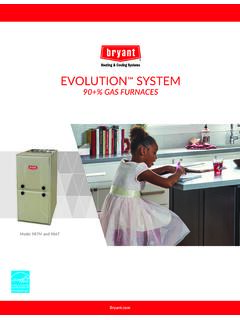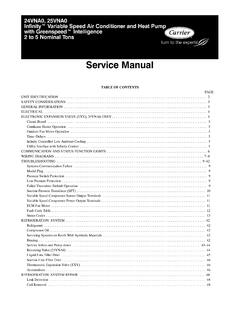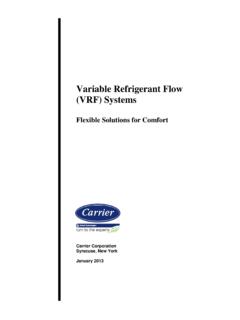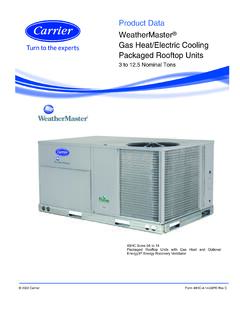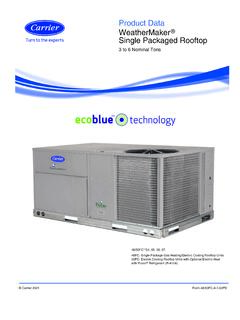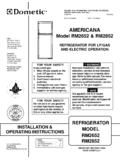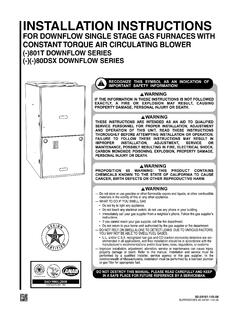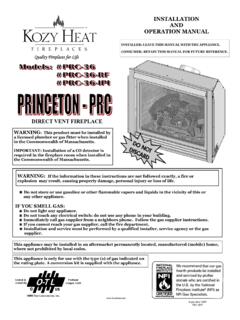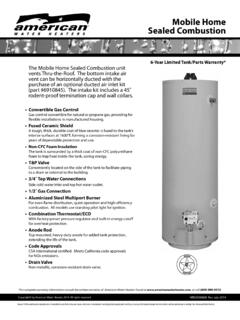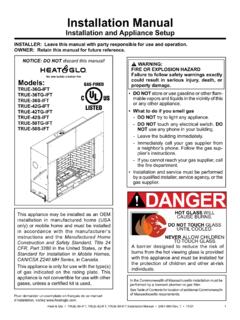Transcription of i12020 i12040 i12080 Smoke Alarm User’s Guide
1 i12020 For models: i12040 . i12080 i12020 , i12040 , i12080 . Smoke Alarm User's Guide AC Wire-in Single and/or Multiple Station (up to 24 Devices) Ionization Smoke Alarm with SMART HUSHTM Control to temporarily silence nuisance alarms. Models i12040 and i12080 have a 9-Volt Battery Back Up and the model i12080 . has a battery powered safety light. Thank you for purchasing this Smoke Alarm . It is an important part of your family's home safety plan. You can trust this product to provide the highest quality safety pro- tection. We know you expect nothing less when the lives of your family are at stake.
2 Kidde alarms and accessories CAN ONLY BE interconnected with other Kidde alarms and accessories as well as specified brands and models of interconnect compatible alarms. Connection of Kidde products to a non-specified manufacturer's interconnect system, or connection with non-specified equipment from another manufacturer into an existing Kidde system could result in nuisance alarming, failure to Alarm , or dam- age to one or all of the devices in the interconnect system. Refer to the User's Guide supplied with each Kidde product for interconnect compatible models, brands, and devices.
3 Refer to the wiring instructions in section 3 for NFPA initiating device limits. For your convenience, write down the following information. If you call our Consumer Hotline, these are the first questions you will be asked. Smoke Alarm Model Number (located on back of Alarm ): Date Code (located on back of Alarm ): The National Fire Protection Association (NFPA). and the manufacturer recommend replacing this Alarm ten years from the date code. Date of Purchase: Where Purchased: Manual P/N 820-1183 Rev. B 11/2006. This Alarm detects products of combustion using the ionization technique.
4 It contains microcurie of Americium 241, a radioactive material (see section 9). Distributed under NRC License No. 32-23858-01E. Manufactured in compli- ance with NRC safety criteria in 10 CFR The purchaser is exempt from any regulatory requirements. Do not try to repair the Smoke Alarm yourself. Refer to the instructions in section 12 for service. WARNING! WARNING! ON MODELS WHICH CONTAIN BATTERIES, THE. BATTERY DOOR WILL NOT CLOSE UNLESS ALL THE REQUIRED BATTERIES. ARE PRESENT. DISCONNECTION OR LOSS OF POWER (AC AND/OR BATTERY BACKUP) TO.
5 THE Alarm WILL RENDER THIS Alarm INOPERATIVE. ELECTRICAL RATING: 120 VAC, 60HZ, 80mA maximum per Alarm (maximum 80mA for originating unit with 24 devices interconnected). IMPORTANT! READ ALL INSTRUCTIONS BEFORE INSTALLATION AND KEEP. THIS MANUAL NEAR THE Alarm FOR FUTURE REFERENCE. CONTENTS OF THIS MANUAL. 1 -- RECOMMENDED LOCATIONS FOR Smoke ALARMS. 2 -- LOCATIONS TO AVOID. 3 -- INSTALLATION INSTRUCTIONS. 4 -- OPERATION AND TESTING. 5 -- NUISANCE ALARMS. 6 -- MAINTENANCE. 7 -- LIMITATIONS OF Smoke ALARMS. 8 -- GOOD SAFETY HABITS. 9 -- NRC INFORMATION.
6 10 -- NFPA PROTECTION STANDARD 72. 11 -- CALIFORNIA STATE FIRE MARSHAL REQUIRED INFORMATION. 12 -- SERVICE AND WARRANTY. 1. RECOMMENDED LOCATIONS FOR ALARMS. Locate the first Alarm in the immediate area of the bedrooms. Try to monitor the exit path as the bedrooms are usually farthest from the exit. If more than one sleeping area exists, locate additional alarms in each sleeping area. Locate additional alarms to monitor any stairway as stairways act like chim- neys for Smoke and heat. Locate at least one Alarm on every floor level.
7 Locate an Alarm in every bedroom. Locate an Alarm in every room where electrical appliances are operated ( portable heaters or humidifiers). Locate an Alarm in every room where someone sleeps with the door closed. The closed door may prevent an Alarm not located in that room from waking the sleeper. Smoke , heat, and combustion products rise to the ceiling and spread horizon- tally. Mounting the Smoke Alarm on the ceiling in the center of the room places it closest to all points in the room. Ceiling mounting is preferred in ordinary residential construction.
8 For mobile home installation, select locations carefully to avoid thermal barri- ers that may form at the ceiling. For more details, see mobile home INSTAL- LATION below. When mounting an Alarm on the ceiling, locate it at a minimum of 4 (10 cm). from the side wall (see figure 1). When mounting the Alarm on the wall, use an inside wall with the top edge of the Alarm at a minimum of 4 (10 cm) and a maximum of 12 ( cm). below the ceiling (see figure 1). Put Smoke alarms at both ends of a bedroom hallway or large room if the hallway or room is more than 30 ft ( m) long.
9 FIGURE 1. FIGURE 2 FIGURE 3. Install Smoke Alarms on sloped, peaked or cathedral ceilings at or within 3ft ( ) of the highest point (measured horizontally). NFPA 72 states: Smoke alarms in rooms with ceiling slopes greater than 1 ft in 8 ft (.3m in m) hor- izontally shall be located on the high side of the room. NFPA 72 states: A. row of detectors shall be spaced and located within 3 ft ( ) of the peak of the ceiling measured horizontally (see figure 3). mobile home INSTALLATION. Modern mobile homes have been designed and built to be energy efficient.
10 Install Smoke alarms as recommended above (refer to RECOMMENDED LOCA- TIONS and figures 1 and 2). In older mobile homes that are not well insulated compared to present stan- dards, extreme heat or cold can be transferred from the outside to the inside through poorly insulated walls and roof. This may create a thermal barrier which can prevent the Smoke from reaching an Alarm mounted on the ceiling. In such units, install the Smoke Alarm on an inside wall with the top edge of the Alarm at a minimum of 4 (10 cm) and a maximum of 12 ( cm) below the ceiling (see figure 1).
